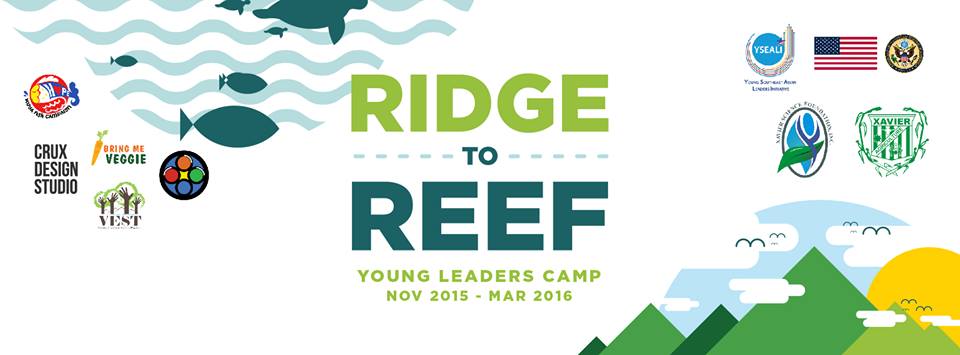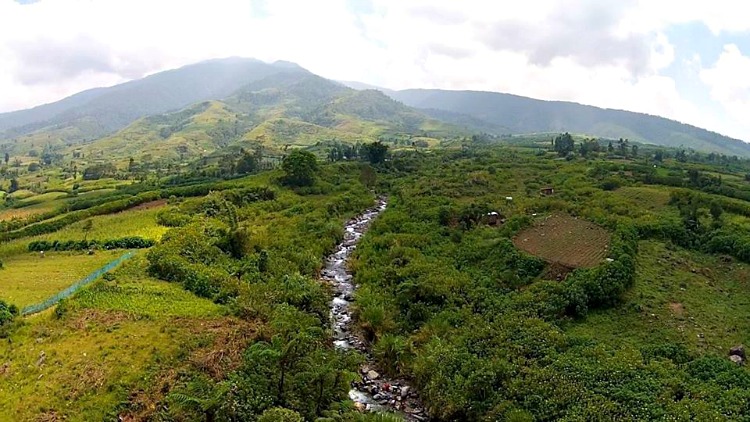
By Stephen J Pedroza
In pursuit of helping young leaders, including those from lumad communities, make an impact in their communities, the “Ridge to Reef Young Leaders Camp” is set to train millennials in sustainable resource management and production of information campaign materials.
The call for online applications to the leadership camp, which will be held from December until February next year, will start on November 1.
Diverse backgrounds and experiences
Participants will be selected from resettlement and riverside barangays of Cagayan de Oro City and lumad settlements in Bukidnon.
“[There] will be a good mix of young indigenous people from the uplands, disaster survivors formerly living in riverside communities and also students from the city proper,” shared Xyla Mercedita Gualberto, the project coordinator for the Ridge-to-Reef YLC.
The project is driven by a great sense of urgency for a long-term mechanism that will protect and preserve ecosystems and resources from the ridges of Northern Mindanao down to its watersheds and ultimately to Macajalar Bay, a major fishing ground in Misamis Oriental. And it hopes to teach the young about ecological conservation through first-hand experience.
“Their learning will not be purely theoretical but also experiential. We will bring them to the very places where the water flows, from the mountains, to the rivers down to the seas,” Gualberto said, who derived the concept of the training from the participatory zoning course of Xavier Science Foundation’s Institute of Land Governance.
“This way, they will have greater appreciation of the interconnectedness of the ecosystems and they will have deeper learning,” she shared.
The leaders will undergo workshops to enhance their knowledge in grassroots planning, local land governance, ecosystem conservation, and ideation for their information, education and communication (IEC) projects, which will range from customary environmental campaigns and trainings to upbeat concerts and film presentations.
Gualberto emphasized that the IEC outputs of the youth groups will be based on their own contexts and issues close to their communities.
Experts in the fields of resource management, ecosystem services sustainability and multimedia production have been tapped to train the participants who will eventually ripple their learning to fellow millennials.

[Mt Kalatungan, revered for its natural beauty and bounty, has long faced environmental degradation brought about by illegal logging, hunting of endangered species, socio-economic pressures and other excessive human activities. In effect, being the catch basin of the waters from the hinterlands of Bukidnon, riverbank communities of Cagayan de Oro City would bear massive damage of lives and properties during strong typhoons. Drone shot by Anthony Jacob C Karagdag]
Need for protection
During the first phase of the camp in December, the youth leaders will converge in Miarayon, Talakag at the foot of Mt Kalatungan, one of Bukidnon’s prized giants.
Harboring diverse species of flora and fauna, Mt Kalatungan has been identified as part of a “Terrestrial Biodiversity Corridor” in the Greater Mindanao with “Extremely High Critical” conservation priority.
The protected area of Mt Kalatungan, which prominently stands 2,824m above sea level (known to mountaineers for having the sixth highest peak in the country), is the recipient of the Payment for Ecosystem Services (PES) project of XSF and XU Research and Social Outreach.
This rehabilitation project, built on research and community collaborations, has introduced to Northern Mindanao a “rewarding mechanism” where there exists “the seller” who protects and provides ecosystem services to “the buyer” who benefits from these intangible products.
The inaugural year of the PES project reaped promising results and engagements amid the challenges of a paradigm shift to what is known as an “emerging financial tool for environmental conservation.”
“We want to continue what we have started,” said Evans Yonson, project director of Ridge-to-Reef Camp, “but this time with emphasis on youth leaders.”
Yonson is a Development Communication professor at XU and social marketing supervisor of Valuing Ecosystem Services Together (VEST) project, an offshoot campaign of PES which aimed to propel the different sectors in the region to participate in the PES scheme for the rehabilitation of Mt Kalatungan and the sustainable provision of ecosystem services.
During its run, VEST helped solicit the help of businesses, cooperatives, academic institutions, religious organizations and households in CDO to become “buyers” of the various ecosystem services offered by the tribes inhabiting and caring for Mt Kalatungan. CDO acts as the catchment basin of the region’s upstream bodies of water, and serves to gain from the protection of Mt Kalatungan.
Yonson hopes to achieve the same kind of active involvement from the youth in the Ridge-to-Reef Camp. Its second phase, which consists of the IEC training and team monitoring sessions with mentors from the XU DevCom Society, will happen in January while implementation of the IEC projects in the participants’ respective communities, comprising the last phase, will be held in February.
The project will culminate with an exhibit at the Centrio – Ayala Mall on March 1 with representatives from the US Embassy – Manila, which provided the funding for the project through its Young Southeast Asian Leaders Initiative (YSEALI) Seeds for the Future Grant Competition. It is one of the 18 winning projects across the ASEAN region, tackling Southeast Asia’s challenges on education, environmental protection, civic engagement and economic development.
Yonson believes that the Ridge-to-Reef YLC can provide the vehicle to forge a partnership between young indigenous peoples and city dwellers for a single cause.
“The youth leaders will collaborate in the light of our common interest — Mother Nature,” he said.